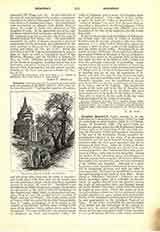

Josaphat (JEHOSHAPHAT), VALLEY OF, mentioned in only one passage of the Bible (Joel, iii—Heb. text, iv). In verse 2 we read: “I will gather together all nations, and will bring them down into the valley of Josaphat: and I will plead with them there for my people, and for my inheritance Israel, whom they have scattered among the nations” (cf. verse 12). According to one interpretation which has gained currency, the prophet has presented as the scene of Jahveh’s judgment on the Gentiles that valley where, in the presence of Josaphat, King of Juda, He annihilated the coalition of Moab, Ammon, and Edom. This valley of the desert of Teqo’a, which was called by the Jews emeq Berakah, that is, “valley of blessing”, is to be sought in the vicinity of the Khirbet Berekut, some distance to the west of the Khirbet Tequ’a (about eleven miles from Jerusalem). It is also credible that the prophet meant to designate an ideal, indeterminate valley—the valley of judgment, and no more—for Josaphat signifies “Jahveh judges”. This valley is, in fact, spoken of under the name of “valley of destruction” (A. V. “valley of decision”) in verse 14 of the same chapter. According to the context, the Divine judgment will be exercised upon the nations who afflicted Juda and Jerusalem at the time of the captivity and the return from exile.
In the fourth century, with the Pilgrim of Bordeaux, the Cedron takes the name of Valley of Josaphat. Eusebius and St. Jerome strengthen this view (Onomasticon, s.v.), while Cyril of Alexandria appears to indicate a different place; early Jewish tradition denied the reality of this valley. Subsequently to the fourth century, Christians, Jews, and, later, Mussulmans regard Cedron as the place of the last judgment. What has lent color to this popular belief is the fact that since the time of the kings of Juda, Cedron has been the principal necropolis of Jerusalem. Josias scattered upon the tombs of the children of Israel the ashes of the idol of Astarte which he burned in Cedron (IV Kings, xxiii, 4). It was in Cedron that the “hand” of Absalom was set up, and the monument of St. James, and there, too, may be seen, in our own days, the very ancient monolithic tomb said to be that of Pharaoh’s daughter, and the sepulchres of certain priestly families now known as the tombs of Absalom, of St. James, and of St. Zachary. The ornamental facade of the tomb said to be that of Josaphat has been completely walled up by the Jews, who have their cemeteries on the flanks of the Valley of Cedron. They wish to stand in the first rank on the day when God shall appear in the Valley of Josaphat.
F. M. ABEL

